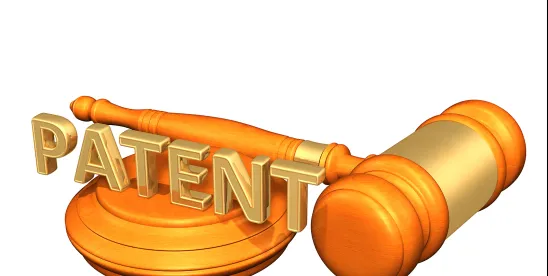Whether or not filing an offensive patent litigation is the right course of action for your business can be a complicated strategic question, involving analysis of seemingly-endless and sometimes-conflicting factors. Often patent owners focused on an answer to the ultimate question of whether to file a suit overlook the many pitfalls that may arise during their pre-filing investigations. Those pitfalls can devalue a potential enforcement opportunity and create unnecessary challenges later during litigation.
Below are a few tips for patent owners who are considering patent enforcement:
- Contact a knowledgeable patent litigator as early as possible. Many patent litigators will take an initial “quick look” at a patent or patent portfolio without charge. Even if the case isn’t a potential fit for their law firm, they can often steer you to an attorney or firm that may be a better match for your potential case and help guide you from the outset.
- Be mindful of creating work product or communicating with third parties without an attorney. An attorney’s work product performed in anticipation of litigation does not have to be produced during discovery. A non-attorney’s work product (that was not done at the direction of an attorney) is unlikely to be protected and may have to be produced during discovery. This means drafts of patent analyses prepared by a non-attorney, which may be based on incomplete information and prepared without a working understanding of patent law, may later have to be produced. And such documents could be used to undermine your case.
- Even “Confidential” communications are subject to discovery during litigation. Communications between a client and their attorney related to legal advice are privileged and do not have to be produced during discovery. In contrast, communications between a patent owner and a third party are not privileged, even if they are confidential. Confidential documents and communications are required to be produced during discovery, although access to confidential information can be restricted through the use of protective orders.
- AI is not a substitute for an attorney, and your communications with AI-tools may not be confidential. While AI-tools may be able to direct you to useful information – like this blog post – many nuances exist in the law that may apply to the specific circumstances of your business and may not be reflected in the publicly-available information that is intended for a general audience. Also, most AI-tools are not confidential and your queries are used to further train the tool. Also keep in mind that your communications with the tool are not protected from discovery. Do not put any information that you would consider confidential into such tools.
- Implement a document retention program for your organization. If you are anticipating filing patent litigation, ensure that you are preserving documents and emails. Ask your attorney for an appropriate “litigation hold” for your organization. Be aware that “documents” may also apply to “things” such as prototypes that embody your patented invention.
- Collect relevant materials. Collect relevant documents that demonstrate your invention story, establish critical timelines, reflect the suspected infringement, and support the monetary value of your innovations and potential damages (such as past licenses or offers to license, proceeds related to any patented products, valuations of the patents, industry valuations, or estimated sales of the infringing products). Doing some initial leg work will allow counsel to evaluate your potential case more quickly, provide you with a better assessment of any potential enforcement action, and hopefully avoid unwelcome surprises later.
- Mark your patented or licensed products. If you sell a product covered by a patent, it must be marked with “patent” and the number, as explained in 35 U.S.C. § 287. Failure to mark as required may bar recovery of pre-suit damages, unless the accused infringer was notified of the infringement.
- Don’t play your hand in the public forum. If you intend to pursue patent enforcement actions, do not post on blogs, social media, and other public forums about your plans, what your patents cover, or threaten legal action. You may find yourself later facing unfair competition claims or have your posts used against you during discovery. Or you may find your company is sued defensively by an infringer in a declaratory judgment action before you and your attorneys are ready to file.
- Ask questions. There are many different approaches, strategies, ways to structure patent litigation, and ways to manage a business’s specific risk concerns. If you don’t know what questions to ask your attorney, AI-resources may be extremely useful to help you generate a list of questions. For example, try this prompt: You take the role of in-house counsel. Generate a list of questions to ask a law firm to develop a patent litigation strategy that is aligned with a [insert product, services, or industry sector, such as “semiconductor”] company’s goal of protecting innovations around [insert a specific feature or product] and specifically focused on [costs, fees, budget, venue, risk management, PTAB, counterclaims, timing, coordination with foreign actions or entities, or other general business objectives].




 />i
/>i

